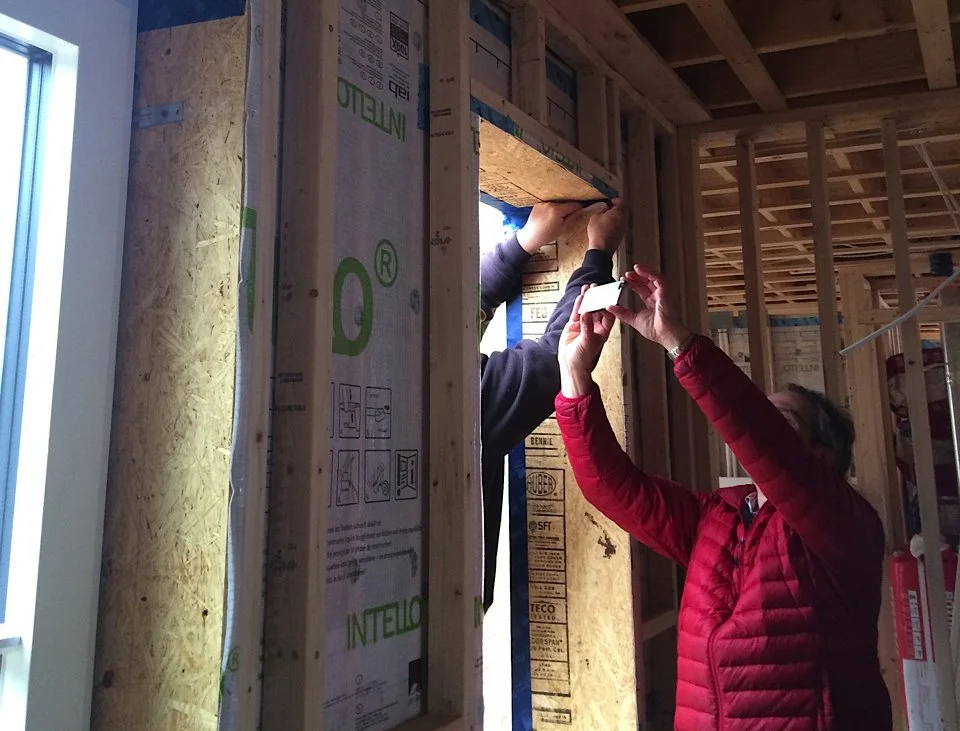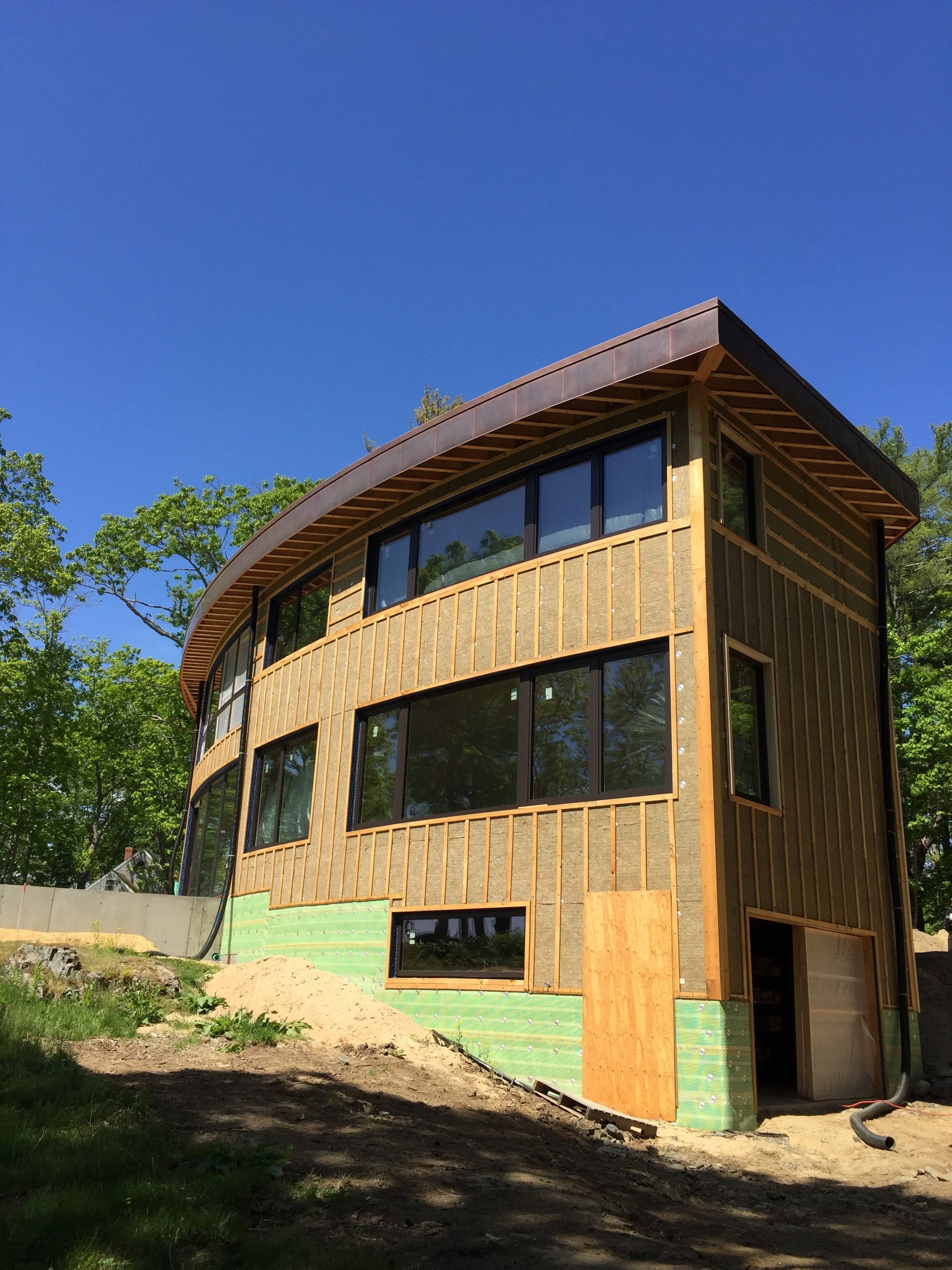Passive Design: Riverview Net Neutral Home
One of the most important considerations in sustainable and resilient design is how to minimize energy consumption in the ongoing operation of a building. A high performance building will reduce energy use over the entire life of the structure while improving the comfort and well-being of its occupants. As opposed to “active” building systems, like air conditioning or solar electric panels, “passive” systems enhance comfort and improve efficiency whether or not the power is on. Many of the measures, like air-sealing or increased insulation levels, are concealed within the walls of the building and not readily visible to the building occupants. They can, however, be felt. Proper air-sealing will reduce or eliminate drafts. Insulation minimizes temperature swings, especially during the coldest and hottest times of the year. Multi-pane, high performance windows keep interiors quieter by outdoor noise.
The Riverview Net Neutral House illustrates how passive design strategies are integral to the success of the project and long term building performance. A continuous “intelligent” air barrier was installed throughout the house to allow some moisture migration through the building assembly but prevent air infiltration and exfiltration. To help ensure the integrity of the air barrier, a “service cavity” was added to the interior face of the wall assembly. Electrical wiring and plumbing piping can now be run within the service cavity avoiding penetrations through the air barrier and helping preserve its integrity for the life of the building. Coupled with increased insulation levels and high performance doors and windows, this barrier significantly reduces energy loss through the building envelope. Less energy lost to the outdside means less energy is required to keep the interiors comfortable, even during periods of more extreme outdoor temperatures.
On all our projects, we first consider passive design strategies for reducing energy requirements before considering the appropriate types of active systems to employ. The active building systems at Riverview, like the high performance heat pump or photovoltaic panels, would not meet the space-conditioning requirements of the building without first reducing the energy demand of the building through passive design measures.
Since passive design is integral to our overall process, it is difficult to select specific projects to highlight. A few that illustrate specific design strategies include:
• North Country SPCA: window orientation
• Zen Studio: continuous wood-fiber insulation
• Kittery Point House: passive house construction
Most of the images in this section show work in process - highlighting areas of the building that are covered up when work is complete. Care taken at this juncture of the process is critical in making sure the passive design strategies are implemented successfully.



